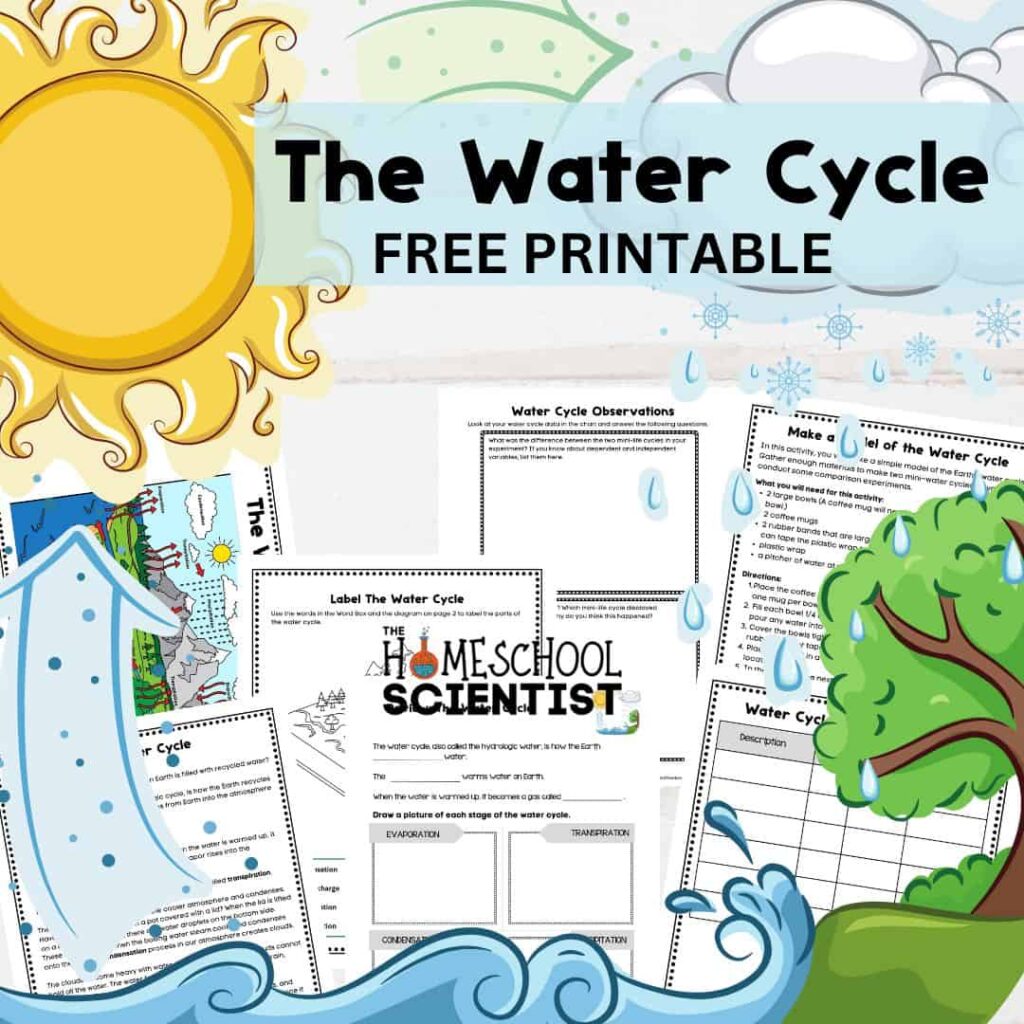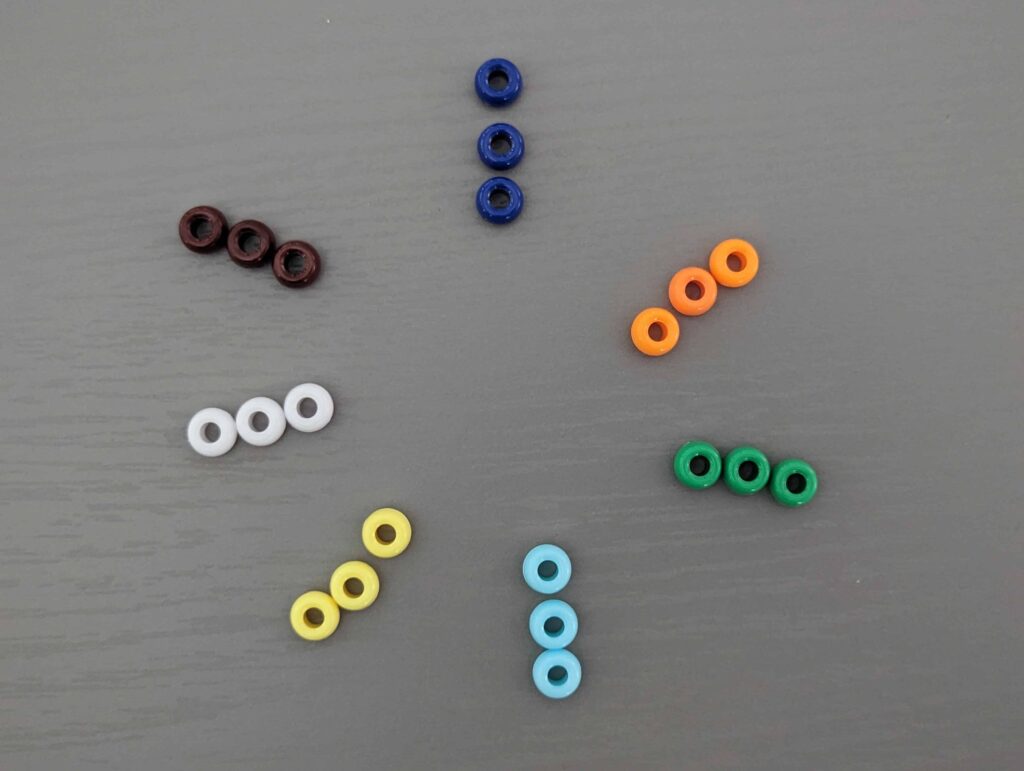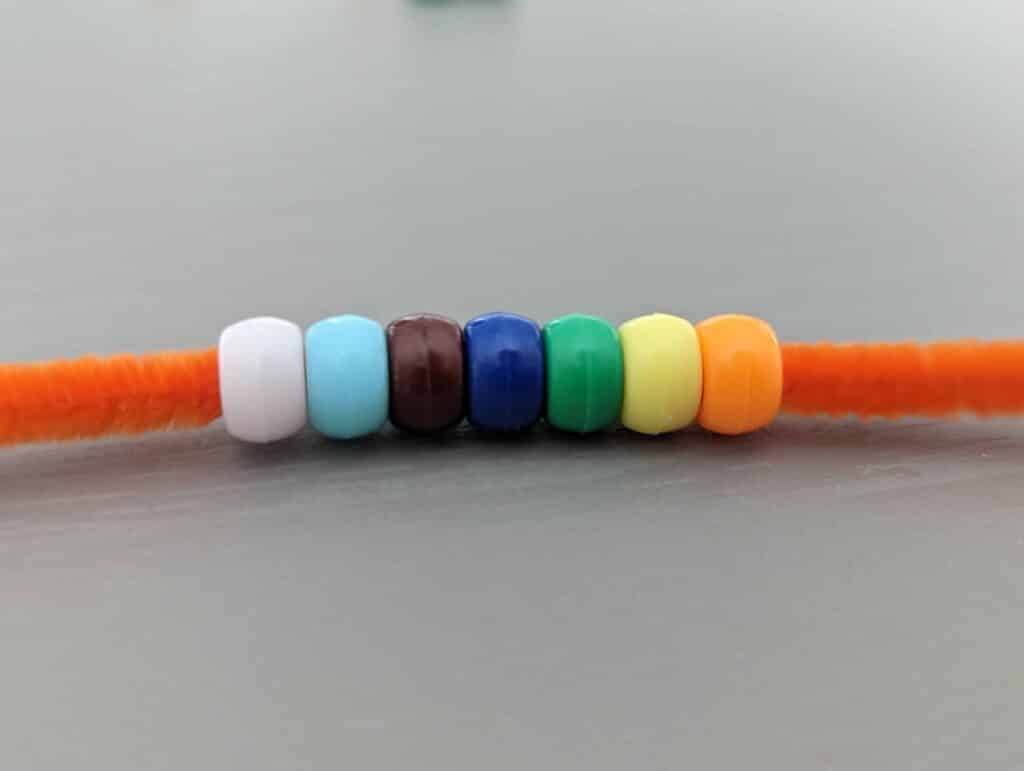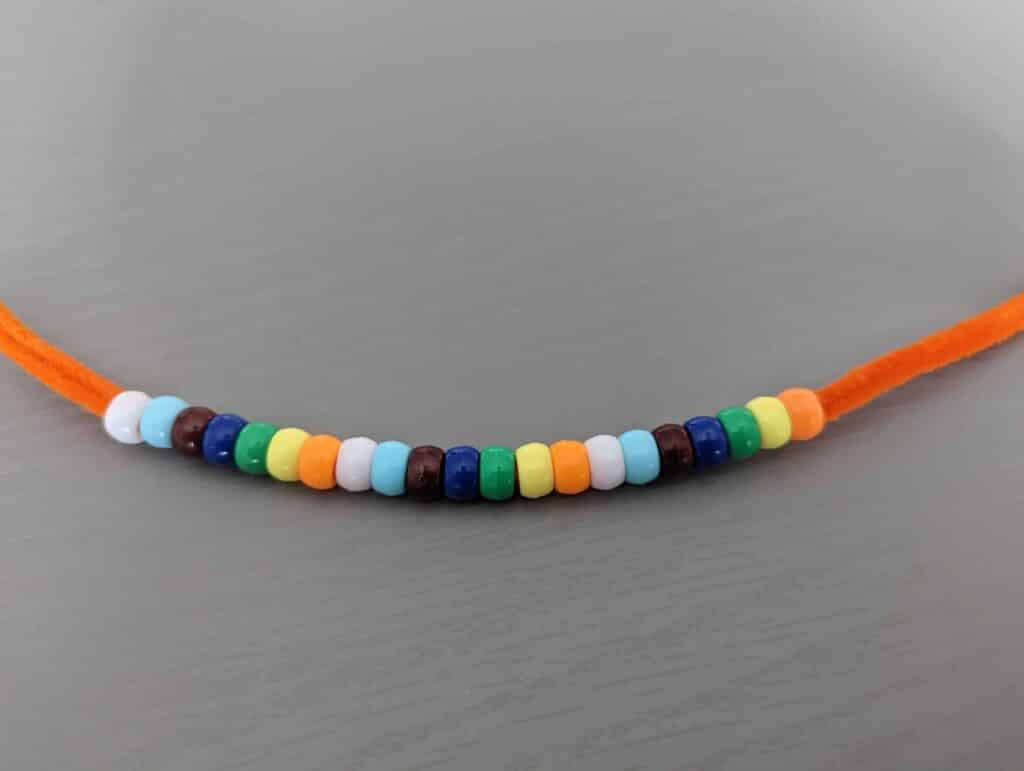Water Cycle Bracelet
This water cycle bracelet activity is a unique way to help students understand that the water cycle is how our water is recycled. We do not “lose” or “gain” water. It is recycled as it evaporates from the Earth and then returns in some form of precipitation. Vast quantities of water evaporate from seas and lakes to form clouds that move over the earth, rise, cool, and condense into a liquid to release onto the earth.
70% of the Earth is covered with water. Most living organisms consist primarily of water. Humans are about 60% water, and jellyfish are about 95% water. That is the same water content as a cloud!
The “fresh” participation that falls from the clouds does not contain salt. It falls to earth, soaks into the ground, and eventually runs back into bodies of water.
Ocean water contains about 3.5% salt. We can only use it once all the salt has been removed. And desalinating water (removing the salt) can be very expensive. That’s why conserving water, keeping streams, lakes, rivers, and oceans clean, and using water wisely is important.
Want to cover more information about the water cycle with your children? Check out our free lesson and printable on the water cycle.
Fill out the form below, and we’ll send you the free printable. Check out our other post on the water cycle and make a model of a water cycle.
Let’s make a “water cycle bracelet” to illustrate the recycling principle.
To teach students to conserve water and use it wisely, we make a “water cycle bracelet” to illustrate the recycling principle.
How to Make a Water Cycle Bracelet
For the water cycle bracelet, you will need:
- A chenille stick, this elastic cord, or some twine
- Scissors, if you are using twine
- Pony beads – at least two beads of the following colors – yellow, dark blue, light blue, green, white, brown.
Each color of the water cycle bracelet represents the following in the water cycle:
- White: Represents condensation and clouds. Condensation is when vapor gathers to form clouds, cools, and water droplets form that then fall to the earth. This is going to be the start of our water cycle bracelet.
- Light Blue: Represents precipitation. Precipitation is snow, rain, and hail that fall back to the earth when clouds are full.
- Brown: Represents percolation. Percolation is water filtering into the ground
- Dark Blue: Represents the surface water. This is the precipitation falling on the rivers, lakes, etc.
- Green: Represents transpiration. Transpiration is moisture given off by plants and trees.
- Yellow: Represents the Sun’s energy that heats up the atmosphere and Earth.
- Clear or another color, if clear is not available (We used orange for our project.) Represents evaporation. This is the process through which the Sun heats up the water, and the water changes into water vapor (a gas). The water vapor then rises into the atmosphere. (We would then start back with the white bead.)
Directions:
- Trim the chenille stick, cord, or twine to fit around your wrist, plus leave enough to tie off the bracelet.
- Tie off one end of the bracelet so the beads won’t slip off as you string the beads.
- Thread one set of beads onto the cord in the order listed.
- Repeat to represent the water cycle repeating over and over. You might need 2 to 4 sets of beads, depending on the size of the bracelet.
- Tie a knot in the cord and trim excess.
Now, use your bracelet to explain the water cycle to others!
______________________________________
I hold a master’s degree in child development and early education and am working on a post-baccalaureate in biology. I spent 15 years working for a biotechnology company developing IT systems in DNA testing laboratories across the US. I taught K4 in a private school, homeschooled my children, and have taught on the mission field in southern Asia. For 4 years, I served on our state’s FIRST Lego League tournament Board and served as the Judging Director. I own thehomeschoolscientist and also write a regular science column for Homeschooling Today Magazine. You’ll also find my writings on the CTCMath blog. Through this site, I have authored over 50 math and science resources.







